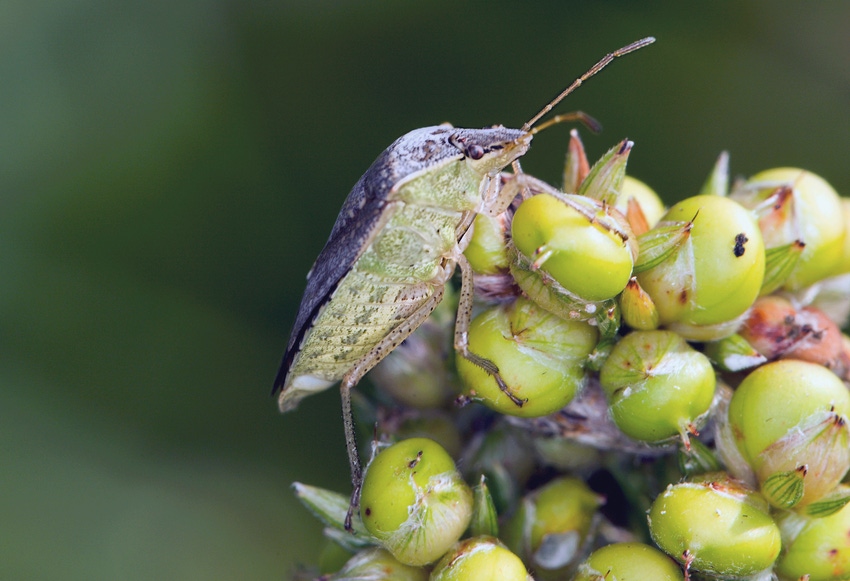July 25, 2016

Cotton growers in the United States are concerned about native stink bugs that have attacked cotton and other crops for decades.
The green stink bug (Chinavia hilaris), southern green stink bug (Nezara viridula), and brown stink bug (Euschistus servus) continue to threaten cotton. But an Agricultural Research Service scientist in Georgia has found some environmentally friendly alternatives to insecticides.
"Cotton growers are increasingly interested in producing their crops in ways that have less impact on the environment," says ARS entomologist Patricia Glynn Tillman, who is based in Tifton, Georgia.
The three native stink bugs are immune to the insect-killing toxins incorporated into most modern cotton varieties. Insecticides are effective, but they also kill the stink bug's natural enemies, and they often require repeated use throughout the growing season. Organic growers can't use conventional insecticides.
Stink bugs continue to pose a serious economic threat. Last year, they collectively infested roughly a million acres of cotton in Georgia alone, and growers there spent $12 million to control them. The bugs are a particular problem in the southeastern United States, where cotton is often grown alongside peanuts. Brown and southern green stink bugs develop in peanut fields and migrate into cotton. Green stink bugs move into cotton from nearby wooded areas.
Because of work by Tillman and others, some growers are planting "trap crops," such as soybean and grain sorghum, to lure stink bugs away from cotton. Other options include pheromone-baited traps, which capture and kill stink bugs, and nectar-producing plants, such as milkweed and buckwheat, to feed native parasitoid wasps that attack stink bugs.
In previous work, Tillman showed the effectiveness of setting up plastic barriers between the cotton and peanut rows. Her recent study focused on whether combining a trap crop, a nectar-producing plant, and pheromone traps would control stink bugs where cotton and peanuts grow.
Tillman and her colleagues grew cotton and peanuts side by side for 2 years. In the first year, they planted soybeans as a trap crop (with and without pheromone traps), between the cotton and peanut plots. In other areas, they placed 6-foot-high plastic barriers between the plots.
In the second year of the study, they added nectar-producing buckwheat plants near the cotton. Each week of the May-to-October growing season, they counted stink bugs and stink bug eggs killed by wasps, and they documented damage to cotton bolls.
They found that the plastic barriers between peanut and cotton were the most effective tool, but the multipronged approach is an effective alternative if barriers are not feasible. Soybeans were an effective trap crop, pheromone traps killed stink bugs in the trap crop, and buckwheat plants fed beneficial wasps that reduced stink bug numbers.
"Protecting Cotton From Stink Bugs" was published in the July 2016 issue of AgResearch Magazine.
You May Also Like




